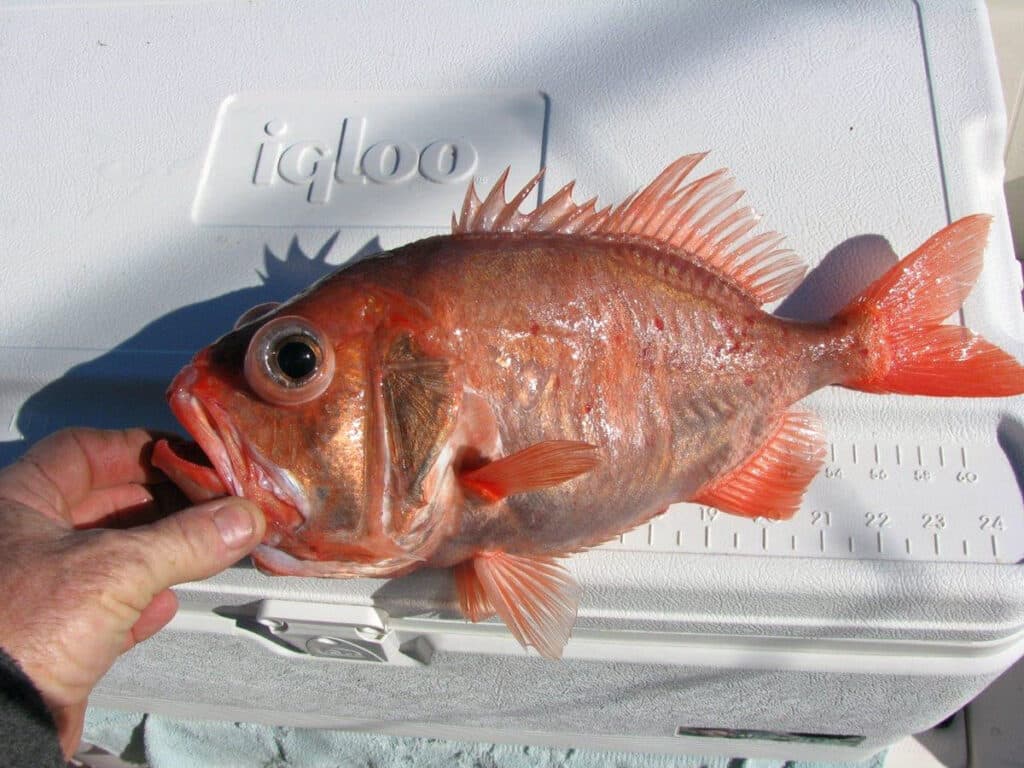
When I see a fish listed by a name so unlikely I wonder if it’s a prank or joke, I’m immediately intrigued. What is this fish? And it seems that there are a surprising number of fish with crazy, unlikely names – even in the International Game Fish Association’s list of world record game fishes. It’s hard to resist sharing these with other, inquisitive anglers, so here are a couple to start with. (We may offer more, as part of an ongoing series, in the future.)
It’s important to understand that we’re talking about common names that are official and recognized in the scientific community. Every fish has one such name. For example, Rachycentron canadum is a cobia. It’s variously known in different areas as ling or lemonfish, but it has only one accepted common name: cobia. So these crazy names aren’t just a local handle that some yokel made up and it stuck. These are the species’ actual names.
Pink Happy (Sargochromis giardi)

The IGFA all-tackle world-record pink happy: 5 pounds, 6 ounces, from the Upper Zambezi River in Zambia (1998).
If your buddy said, “Hey man, I’d really like to get some pink happys today,” you might reply, “No way: I don’t do drugs.” But he would be referring to a species of fish, not feel-good pills.
The pink happy’s name derives not from its customary smile, but because it belongs to what are known as haplochromid cichlids, which gives rise to a number of other happys — the rainbow happy, green happy, Greenwood’s happy and others. The pink is found in rivers of southern Africa, notably the Cunene, Okavango and Zambezi rivers. The name can be misleading not only because these fish have no sense of humor but also because they’re not, well – very pink (except during spawning time). They’re a drab grey brown. Go figure.
Darwin’s Slimehead (Gephyroberyx darwinii)

The IGFA all-tackle world record Darwin’s slimehead: 7 pounds, 8 ounces, from the Norfolk Canyon off Virginia (2008).
Based on the name, one can imagine anglers offshore complaining, “Ugh. Another damned slimehead. Don’t even bring that in the boat.” That would be a huge mistake.
Its name notwithstanding, this deepwater dweller is superb eating. They’re actually a commercially important fish but — surprise, surprise — you won’t find them marketed as “slimeheads.” After all, it’s hard to imagine someone’s spouse saying, “Oh, and honey, pick up a couple pounds of slimehead while you’re at the store.”
Rather these bright red-orange fish are more often called roughies or big roughies, a name associated with topnotch, expensive fillets. And in fact they’re very closely related to the well-known orange roughy. Slimeheads live in depths of 600 to more than 1,500 feet in the tropical and temperate Atlantic, western and central (but not eastern) Pacific and Indian oceans. The species derives its name from mucous cavities atop its head. Be that as it may, if you don’t want that slimehead, I’ll take it!








